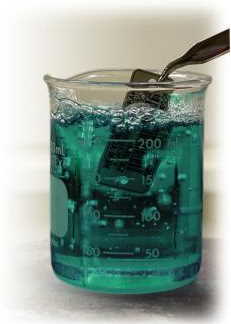What is the best solution for asset tracking in manufacturing? It depends. What's your objective? What is your timeline? What's your budget? The answers to these questions and more will help guide you towards your best solution for asset tracking in manufacturing - whether it's barcode, radio frequency identification (RFID) or even a combination of both.
Enhancing Asset Tracking in Production
Companies can enhance asset tracking in production many ways. The most impactful way is going from a manual asset tracking system to an automated one using barcode and/or RFID technology. The benefits of an automated asset tracking system in production include:
- Improve accuracy and reliability in your supply chain. A big problem facing supply chain managers today is the potential for errors - leading to missed shipments, running out of inventory, product losses or deliveries ending up at the wrong locations. Manual processes are a common issue as many systems still operate using handwritten information, which can often lead to errors.
- Improve production line efficiency. Does a specific part get paint where another part doesn't? Where does a specific part go next in the production process? A quick read of a barcode or RFID tag allows you to streamline and segment your production processes, freeing up valuable resources to use in other areas.
- Increase accuracy of inventory management. Tagging raw materials or even the location of raw materials with a barcode or RFID tag leads to a more accurate method of inventory control, which allows for more efficient production planning and provides real-time visibility into inventory levels so you easily can monitor and prevent shrinkage.
- Maximize asset utilization. Let's pick up a specific asset to illustrate this benefit - returnable containers. A lot of manufacturing companies have pallets, racks, bins, etc., they send out with either materials to other locations or finished products to distributors or customers. Many of these containers area specialized and therefore, expensive to replace. Incorporating an automated asset tracking system into your container management program makes this process easy and helps ensure the pallets, racks, bines, etc., you send out are returned. Plus, you don't waste money replacing assets that have gone missing simply don't have a way to track them.
Increasing Efficiency in Production with Asset Tags
A quick scan of the barcode and/or RFID tag allows you to streamline and segment your production processes, freeing up valuable resources to use in other areas. Monitor and schedule routine maintenance to reduce downtime and make sure your equipment is available and functioning.
Better Inventory Management
Quickly know what you have in stock and what you need more of by scanning a barcode and/or RFID tag as part of an automated inventory management process. Tagging raw materials or even the location of raw materials leads to a more accurate method of inventory control which allows for more efficient production planning.
Process and Quality Improvement in Manufacturing
Traceability is an important reason why production quality control using an automated identification process like barcode and/or RFID technology is becoming increasingly popular. Understanding at what point during the production process the error occurred is key to preventing it from happening again. Plus, the accuracy of the data has allowed for a greater development in manufacturing.
In addition, the ability to quickly read and have important data about critical production equipment readily available for use in the scheduling process is another way to improve production line efficiency. Use this data to schedule routine maintenance during off-peak times and keep equipment available and running during busy periods ensuring parts get out the door on time for your customers.
Custom Asset Tracking Solutions in Manufacturing
Do you need a custom asset tag for your asset tracking process in manufacturing? One way to determine whether to use custom asset tracking tags in your manufacturing application is through a proper qualification process. It involves asking a series of questions about the application, the environment and any conditions the tag may be exposed to. Here are five important qualification questions you can use to help determine if custom asset tags are required.
What is the surface like that the tag will be applied to?
Is it flat, curved, rough, metal, or plastic? Not all adhesives stick to all surfaces the same. To ensure maximum adhesion, a custom asset tag may be required which matches the adhesive to the surface it is going to be applied to. For example, a rough surface like bare metal requires a high surface energy adhesive whereas a waxy or oily surface requires a low surface energy adhesive to make sure the asset tag stays in place.
What temperatures will the asset label be exposed to?
Will the tag be exposed to extreme temperatures (over 250°F)? If yes, for how long? Most standard asset tags are not durable enough to withstand extreme temperatures for any length of time and an application where tags are going to be exposed to these temperatures will require a custom asset tag. Most polymer materials will not withstand prolonged exposure to high temperatures; therefore, a specialty polymer or metal may be needed.
Will the tag be outdoors?
Will the asset tag be exposed to sunlight? If yes, for how long? If the asset that the tag is going on will be outside, then the tag will be exposed to outdoor elements including sunlight, which can be damaging over time to standard asset tags. If the asset will be stored outside for years, the need for a custom asset tag is magnified to ensure the tag lasts.
What will the tag be exposed to?
Will the asset tags be subject to harsh abrasion or cleaning with caustics? Depending on the nature of the application, i.e. what the cleaning process is, a standard asset tag may not be the best fit and a custom asset tag may be required. For example, paper tags or any tag without subsurface printing or an overlaminate will not survive even mild to moderate abrasion. On the other hand, highly caustic chemicals may attack aluminum tags so it is important to understand what the asset tags will be exposed to and adjust the custom asset tag accordingly.
What kind of printing is on the tag?
Customization may be as simple as what is printed on the asset tag. A company logo, special colors, even variable copy may be enough to warrant a custom asset tag. These are just a few of the questions that will help you determine whether a custom asset tag is required for your application. Considering the most expensive component to any asset tracking system is the labor required to attach the asset tags to the asset, it is essential to have the right asset tag the first time. Qualifying the application using the questions listed in this article will help ensure it’s the right custom asset tag and put you on track for success.
How can Metalcraft help?
Metalcraft can assist you in developing an asset management program in a number of different ways. Our Ultimate Guide to Asset Tracking and the supplemental resource the Asset Tracking Checklist are great tools to use on your own or you can contact Metalcraft at [email protected] or 800-437-5283 to speak with one of our ID Specialists who will qualify your application and get you on your way to better asset management with Metalcraft identification products.
 | About the Author: Tyler JohnsonTyler has extensive experience and expertise in the identification industry. Prior to Grey Trunk RFID, he worked at Metalcraft which helped him understand the importance of a high quality identification tag. Now he is leading the team at Grey Trunk RFID to offer the complete solution. |




